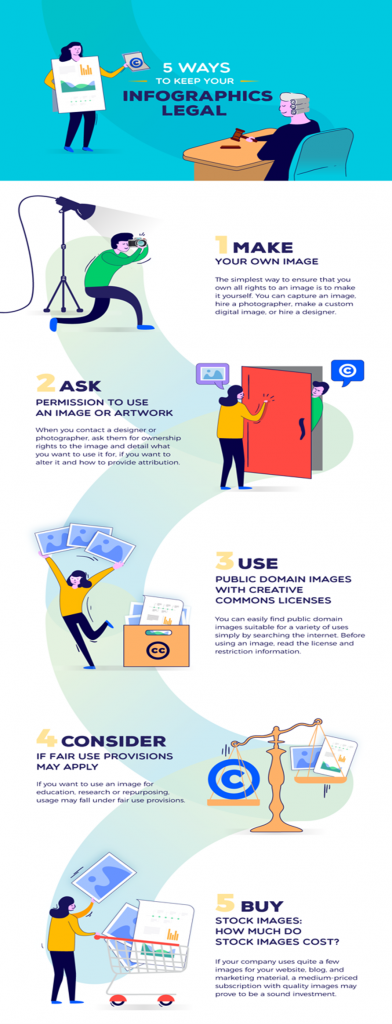Can Intellectual Property Rights Safeguard Your Blog?
 Posted On
Posted On
A blog is like any other creative work of literature manifested in a different form. Due to creative and original use of expressions, blogs are deemed to be counted as private property for which Intellectual Property Rights (IPRs) can be sought. A blog may contain an amalgamation of such rights since blogs do not merely utilize words and phrases but also videos, eBooks, music, etc.
Copyright and Blogs
Copyright is a legal protection afforded to an original, creative literary, musical, or artistic work. However, the content must reflect an expression of something since ideas are not governed under copyright. The protection under copyright is instantaneous and immediate to the works being created, and therefore, it is not necessary to have such rights registered. However, there are a few additional benefits that are attached to the registration. The registration acts as a prima facie proof of the date on which such rights came into being, and the infringement proceedings, as provided for in the respective copyright act of some specific jurisdiction, can be deployed for seeking enforcement of such rights. It may not always prevent unauthorized copying; however, it may serve as a public notice by securing a public record in one’s favor.
The process of seeking registration can be cumbersome and tedious. Therefore, it is always an option to copyright the entire blog. However, after the first registration is obtained, for every addition made in the form of a new video or a fresh write-up, supplementary registration may be required. There are a few websites that endorse the policy of automatic copyright over the content projected therein after giving due acknowledgment and credits to the author of the blogs.
The mode of registering copyright has been eased by most of the jurisdictions by providing for online and offline formats. The cost of filing is generally lower if the online mode of registration is pursued, along with it being faster to process and easier to track the other additional benefits. The offline mode may not be the best-suited method since it would require a lengthier approach and multiple resources to generate the forms and to submit the same.
Alternatives to Seeking Copyright Protection
There are a few other alternatives that can be considered to safeguard the original content contained in a blog. These measures could be as follows:
- Making declarations of the rights vested in the author at a conspicuous place on the website to generate awareness about its source of origin may prove to be fruitful.
- You may consider dedicating a page that illustrates the definite reposting policies. The same should mention the do’s and don’ts, which shall or shall not be tolerated, in addition to any legal provisions that may be applicable.
- You may sign-up for a Creative Common License where the issue lies in seeking acknowledgment of the work. Such a license would enable using the resources held by owners of the CC Licenses to the extent of editing, remixing, copying, and distributing the work without circumventing the copyright law.
- Configure the RSS (Really Simple Syndication or Rich Site Summary) Feed on the WordPress site to keep yourself updated about the website. It helps maintain summaries of your work as well as metadata for each element like date, author, category, etc.
- You may consider adding watermarks to the content created by the author to indicate the source of origin by either using a recognizable and distinct logo, author name, or website.
- You may consider seeking legal redressal by issuing a takedown notice if it is discovered that the content of an author has been stolen.
Blogging and Fair Use
The doctrine of fair use bears substantial importance for blogs since the question of plagiarism may sprout up at regular intervals. Fair use or fair dealing essentially means that in certain instances, like in the form of criticism, commentary, news reporting, teaching, and conducting research, it may be permissible to utilize the content of which the authorship is held by someone else without seeking authorization. However, whether a particular use of copyright content forms fair use or not is purely subjective and may depend on the following factors:
- The purpose of using the content: whether it is for commercial or non-commercial exploitation?
- The nature of the content: whether the content being utilized is an original creative expression or a factual expression?
- The extent of use of such content: whether the entire content is being copied or a specific excerpt relevant to the purpose (teaching, commenting, etc.) is being utilized?
- The impact of one’s work on the value of the original work: where the work has been copied to displace the sales and benefits accruing to the original author, it probably won’t account for fair use.
It is noteworthy to analyze a few examples that might or might not fall into fair use of copyrighted content:
- A parody can be made of a particular piece of work. A parody is a content created out of the original work to make a gimmick or fun of the original work itself. A satire may, however, not always be protected against such use as it does make use of the original content, but it makes a comment or impact on something entirely different (for instance, politics).
- Using the ideas of another person is not copyrightable as well. Therefore, it is fair to use, in the form of content, anything that is an idea conceptualized by another person; for instance, where it was someone else’s idea to write a short story on two people falling in love – the expression is copyrightable, and where the content of another is verbatim copied by another, it does not amount to fair use.
- Utilizing the facts gathered by another person is also not subject to copyright; for instance, a blog quotes that there are 365 days in a year, and the same is copied by a competitor in his or her blog. However, quoting facts word-to-word, paragraph after paragraph, won’t be construed as constituting fair use.
- It is also fair to use works that have fallen into the public domain as the rights over such content are exhausted due to the nature of these rights. It can be used freely by anyone. The same may come in handy while using images of another person to make one’s blog visually appealing.
Trademarking a Blog
Trademarks are the rights vested in the proprietor of a mark, which help differentiate the goods and services of one from that of another to ensure there is no ambiguity in identifying the source of origin of those goods and services. From such a perspective, a blog can be viewed as a service, which provides the content that is readily made available through the internet to all the readers or those who are accessing such content.
Therefore, a trademark may be used to create a distinct identity of the blog, which would help the potential readers from drifting the path and finding the right blog right away. Other than enabling the right course of identification, seeking a trademark would also resolve any instance where a competitor or a third party willingly uses a confusingly similar or identical mark in furtherance of purposing his or her blogging activity. Such a move can be easily objected to since the right can be secured and enforced easily by adducing proof of proprietorship against the mark in conflict.
Another additional benefit of securing trademarks for blogs is where the blog is making commercial gains through advertising. Such income can be negatively affected through theft or duplication of the content since the organic traffic for the original content will be diverted to the one making unauthorized use of the trademark. Securing a trademark would enable easy enforcement of the right against such notorious activities. Similarly, the protection of copyright will also aid in controlling such unscrupulous copying. To ensure and keep under check such activities, there are many different tools made available both online and offline.
Conclusion
Blogs are the new age medium of sharing digital content, which may be reflected in text or through pictures, etc. Since they are creative, IP laws are the correct choice to safeguard and enforce such rights in the form of trademarks and copyright. For preventing digital theft, other routes of action can be undertaken as observed above, like editing the RSS feed, adding a symbol of trademark and copyright to the website. Unethical copying stops when one decides to treat the content of others as they would like their content to be treated. Therefore, the thumb rule of using the content of another person is to give due credits at all times and seek the requite permission from the person authorized for the same. ✅ For more visit: https://www.kashishipr.com/
